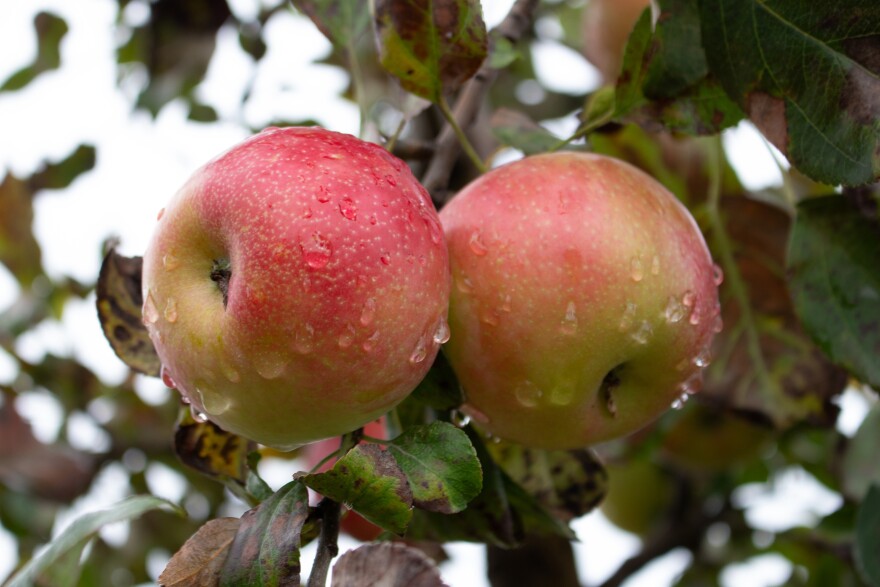As apple season kicks off across Vermont, many orchards say they’re seeing the effects of a very wet spring followed by drought.
Dean Miller of Cortland Hill Orchard in Brattleboro says his fruit are full and healthy, but he only got about 50% of his normal crop — the lightest in his more than 60 years of farming there.
“Every day in May except for a couple of days it rained, and that’s when our blossoms come out,” he said. “So the bees didn’t get a chance to work the blossoms.”
Miller says the rain also hurt his plum crop.
At Rooty’s Apple Orchard in Newport, drought was the biggest wild card Craig Hebert contended with this year.
He tends about 250 trees of McIntosh, Honeycrisp, Paula Reds and Cortlands and runs a u-pick operation. He says right now, he has about half the fruit he normally does.
“We’re supposed to open tomorrow,” he said on Sept. 11. “That’s our opening day, and it doesn’t look like it’s gonna be a very long season.”
Hebert plans to water his trees from a pond down the road, but both growers say water levels are running low and rain would go a lot further.
As of mid-September, roughly two-thirds of Vermont was experiencing severe drought, with the driest conditions in Addison and Rutland counties, central Vermont and the eastern part of the state.
According to the U.S. Drought Monitor, this level of dryness tends to lower fruit yields and size and deplete irrigation ponds and groundwater.
Data from the U.S. Geological Survey shows groundwater levels across the state are running extremely low and some streams have completely dried up.
Meanwhile, data from NASA shows the eastern and central parts of the state are seeing critically low soil moisture — something that heavily impacts agriculture.
“We’re in both a flash drought, which started in June, July, but we’re also in a longer-term drought that started back last year,” said state climatologist Lesley-Ann Dupigny-Giroux.
She says even as towns in Vermont’s Northeast Kingdom were being devastated by floods last summer, the state was slipping into hydrological drought — the sort of troubling phenomenon that depletes wells, streams and ponds and can take several years to dissipate.
Dupigny-Giroux says more analysis is needed to understand whether Vermont is seeing more frequent or severe drought because of climate change.
The state’s climate record shows Vermont experienced prolonged dry periods before human-caused climate change was the driving force shaping our weather patterns.
“Every month, every day, every year brings you that additional data point, that helps you to understand a little better what the changing climate signal looks like,” Dupigny-Giroux said.
In the meantime, apple growers remain hopeful for a good crop of later apples.
Lori Wyman of Hunger Mountain Orchard in Waterbury says so far, they’re seeing a slightly lower yield for their early varieties, like McIntosh. But other trees are showing promise.
“Our later varieties — our Cortlands, our Macouns, our Empires, our Liberties, our Sweet Sixteen trees, our Northern Spies — are all looking like it’s going to be a decent crop,” Wyman said.
In Cabot, Greg Burtt of Burtt’s Apple Orchard says so far, only his Gala crop has been impacted by drought and is a bit withered, but his later varieties are sizing up and coloring well and staying on the tree.
“Be it a miracle or be it good fortune, it’s better than we thought,” he said.
Growers are hoping for rain, but in the meantime, the warm sunny days and cool nights in the forecast over the next few weeks are good for helping apples ripen.
“It’s the cold nights and the sunny days is what ripens your apples,” says Dean Miller at Cortland Hill.








